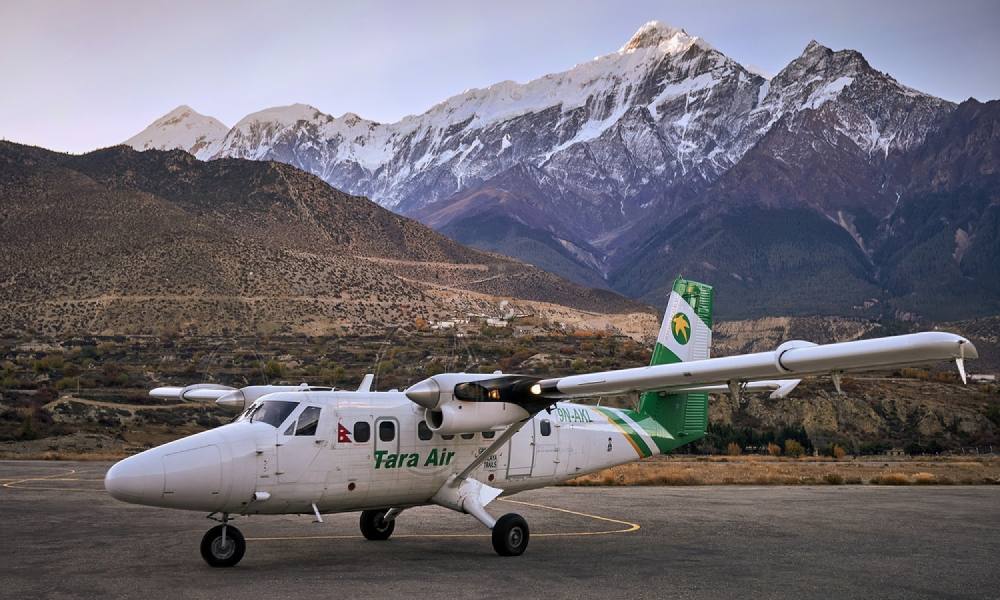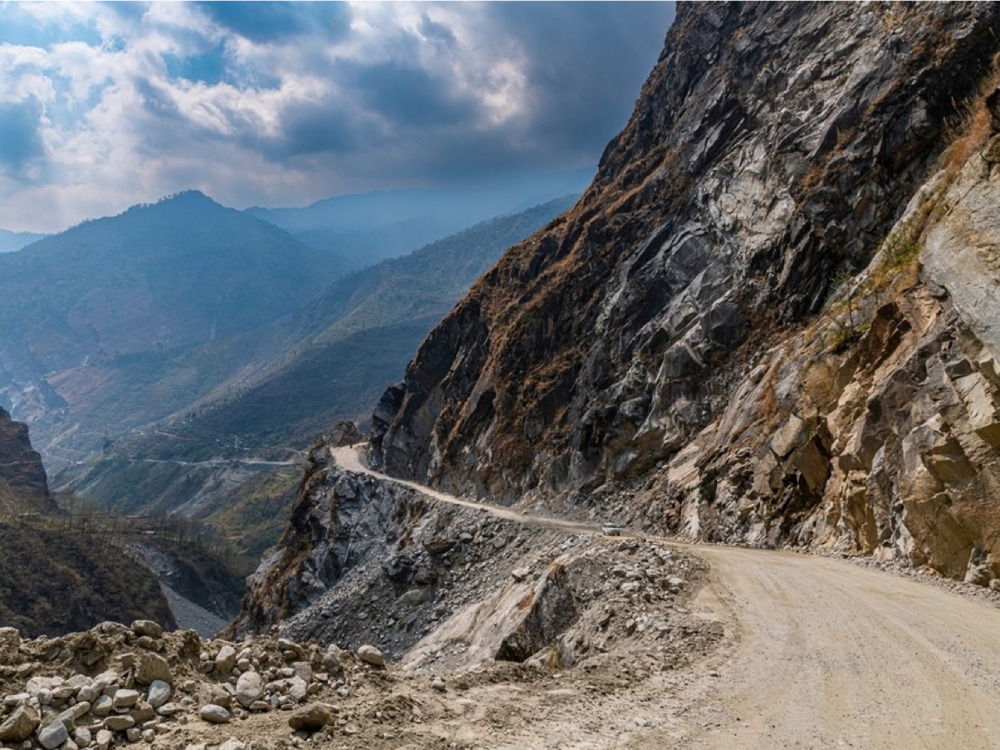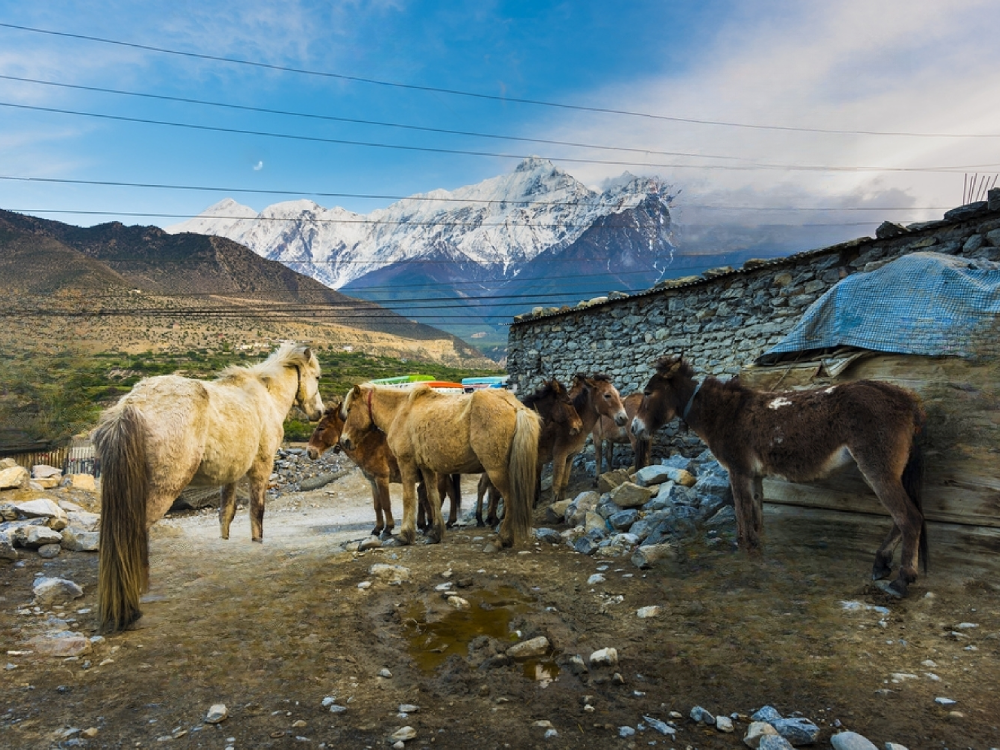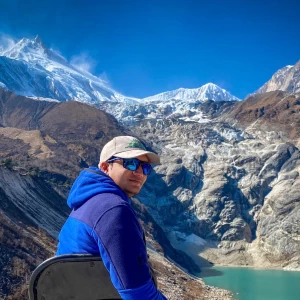How to get to Mustang from Kathmandu?
The way to reach Mustang Nepal (upper and lower) depends upon various factors such as budget, time available, choice of traveller, and physical fitness. You can travel from Kathmandu to Pokhara by flight, bus, or private vehicle, and then continue onwards to Mustang. There are options you can choose from:
Via Air

There are no direct flights to reach Mustang from Kathmandu. You need to stop at Pokhara and from there to Jomsom. The flight from Pokhara to Jomsom takes about 15 minutes where you will fly along with the stunning view of Annapurna Mountain Range, through the Kali Gandaki Gorge, one of the world’s deepest gorge.
Jomsom, located in the Mustang District, serves as the tourist and commercial hub due to the district's only airport. From Jomsom, you need to book a jeep to visit various places in Mustang such as Beni, Mustang Village, Marpha Village (also known as the land of apples), Tatopani, Muktinath (the sacred place of Hinduism and Buddhism), and Lo Manthang (an ancient walled city).
The main question is how you want to travel. If you have the budget, time, and wish, you can choose stoppings along the way on Mustang Trip.
On the subject of how to travel to Mustang, there is another way you can visit Mustang and enjoy the ride there. There are Upper Mustang Helicopter Tours available for people who want to enjoy the scenery of the natural and spiritual place, Mustang up close. However, helicopter tours are not always sure of. This is due to high-speed wind flow in the region. The valleys of Lower and Upper Mustang experience a strong wind which even affects airplane flights.
Via Road
.webp)
You can directly travel to (Upper and Lower) Mustang from Pokhara but you need to book a private jeep or travel by Bus after you come to Pokhara. The trip will take about 6-8 hours to reach Jomsom. Alternatively, you can opt for a tourist bus, which offers comfort and safety with features like air-conditioning and brief stops at restaurants. From Jomsom, you can enjoy the landscapes and scenery along the way and on Upper Mustang jeep tours which take up to 2 days.
The journey starts with a Lower Mustang Jeep tour and converts to an Upper Mustang Jeep tour.
The Upper Mustang tour takes you to the Ancient Forbidden Kingdom and Walled City, Lo Manthang. This is where you may get the chance to engage in the Upper Mustang Tiji Festival tour.
There are many other ways you can enjoy and visit Upper Mustang. There are Upper Mustang driving tours and Upper Mustang Bike tours.
Visitors can contact travel agencies to inquire about how to get to Mustang through their official websites and contact numbers as well.
Many Travelers Visit Mustang to do an on-foot trek to Upper Mustang which takes a journey of about 5 days. The Upper Mustang Trek also offers one of the great experiences in the diverse landscapes of Mustang.
Upper Mustang is a restricted place and to get there either by air or road, you need to have an Upper Mustang Restricted Area permit and Annapurna Conservation Area Permit. The permit is required for all foreign visitors regardless of the duration of stay.
Best time to Visit Mustang

When you know how to travel Mustang, Deciding the best time to visit on a Mustang tour depends on your priorities and travel style. The following season's pros and cons can help you to choose the ideal time:
Spring (March-May)
Pros: Pleasant temperatures, clear skies, colourful landscapes covered in blooming flowers, comfortable for trekking and exploring. Some lucky travellers may get to see the Tiji Festival in Lo Manthang in May, which offers a unique cultural experience.
Cons: It can be windy, and some trekking trails might be inaccessible due to snow melting, higher accommodation costs, and potential crowds during this time.
Summer (June-September)
Pros: This time of year offers the warmest weather ideal for camping and high-altitude treks, lush green landscapes, less crowds compared to peak season.
Cons: Monsoon rains during (July-August) can bring landslides and disrupt travel, higher chance of afternoon thunderstorms, and risk of altitude sickness during hot weather.

Autumn (September-November)
Pros: Normally this period is considered the peak season, with clear skies, and comfortable temperatures, which is ideal for trekking and sightseeing.
Cons: High accommodation cost and potential crowds, especially during Dashain and Tihar festivals in October.
Winter (December-February)
Pros: less crowd, mesmerizing landscapes with snow-capped peaks, potentially cheaper accommodation. Mustang experiences a dry winter, so less risk of rain or snow disrupting the trip.
Cons: temperature drops to a really low level, some trekking routes might be impassable due to snow, many lodges and guesthouses close, and limited accessibility due to potential flight cancellations.
Permits and Guides Required for Mustang Tours
Permits
The permit you will need is an Upper Mustang Restricted Area Permit to enter the area. You will also need an Annapurna Conservation Area permit as well to visit Lower Mustang. or if you plan on travelling to Upper Mustang by trek through Annapurna Base Camp.
The permit costs are as follows:
| Permits | Price of Permit | Additional Price |
|---|
| Upper Mustang Restricted Area Permit | $500 per person for the first 10 days | $50 per person per day to extend the 10 days |
| Annapurna Conservation Area Permit | $30 per person for other countries NPR 1000/- per person for Indian Travelers | None |
Guides
Guides are compulsory for you to know about various information and places regarding Mustang. There are places you may have never heard of or information you are not aware of. The many do's and don'ts that you can avoid through the presence of a guide will be a blessing for your Mustang trip.
The guides also ensure the safety of the individuals they are responsible for.
Difference between Lower Mustang and Upper Mustang
The main essential difference is given by the word, upper and lower. The altitude difference is the major separation point. There are many differences between them in the Mustang region.
.webp)
Mustang(lower) is not a restricted area while Upper Mustang is a Restricted area requiring a special permit to enter. While Upper Mustang has a strong Tibetian influence, mainly Buddhist with Bonpo tradition in the mix. Lower Mustang has a merge of Buddhist as well as Nepali influences, more diverse in population with Hinduism and Buddhism.
To reach Upper Mustang is important due to its unique landscape, carefully preserved culture, and the need for a special permit to enter the region.
To Lower Mustang, you can travel by bus, jeep, flight, helicopter, and trekking. The region is accessible to both international and local tourists, with attractions such as the Muktinath Temple, a holy place for Hindu and Buddhist people.
The Upper Mustang region is famous for the ancient walled city of Lo Manthang, with old monasteries and trekking places such as Annapurna Circuit. The Lower Mustang is famous for the Muktinath Temple, a holy place for Hindu and Buddhist people.
Visiting Upper Mustang offers unique experiences, natural views, and an enriching tour due to the rich history, prosperous cultural settlements, ancient Buddhist monasteries, caves, and palaces, as well as the local tribes and their culture.
The rate of travel is significantly less in Upper Mustang due to its special permit requirement and expensive because of its exclusivity. Whereas, Lower Mustang has travellers coming from all over the world in large volume.
Conclusion
For any enthusiastic traveller, how to travel Mustang will not be a difficult answer to find. As a place of natural as well as a cultural hub, Mustang is one of the destinations you need to visit. In the Mustang trip, you will find the Spiritual as well as physical clarity you seek.


.webp)


.webp)
